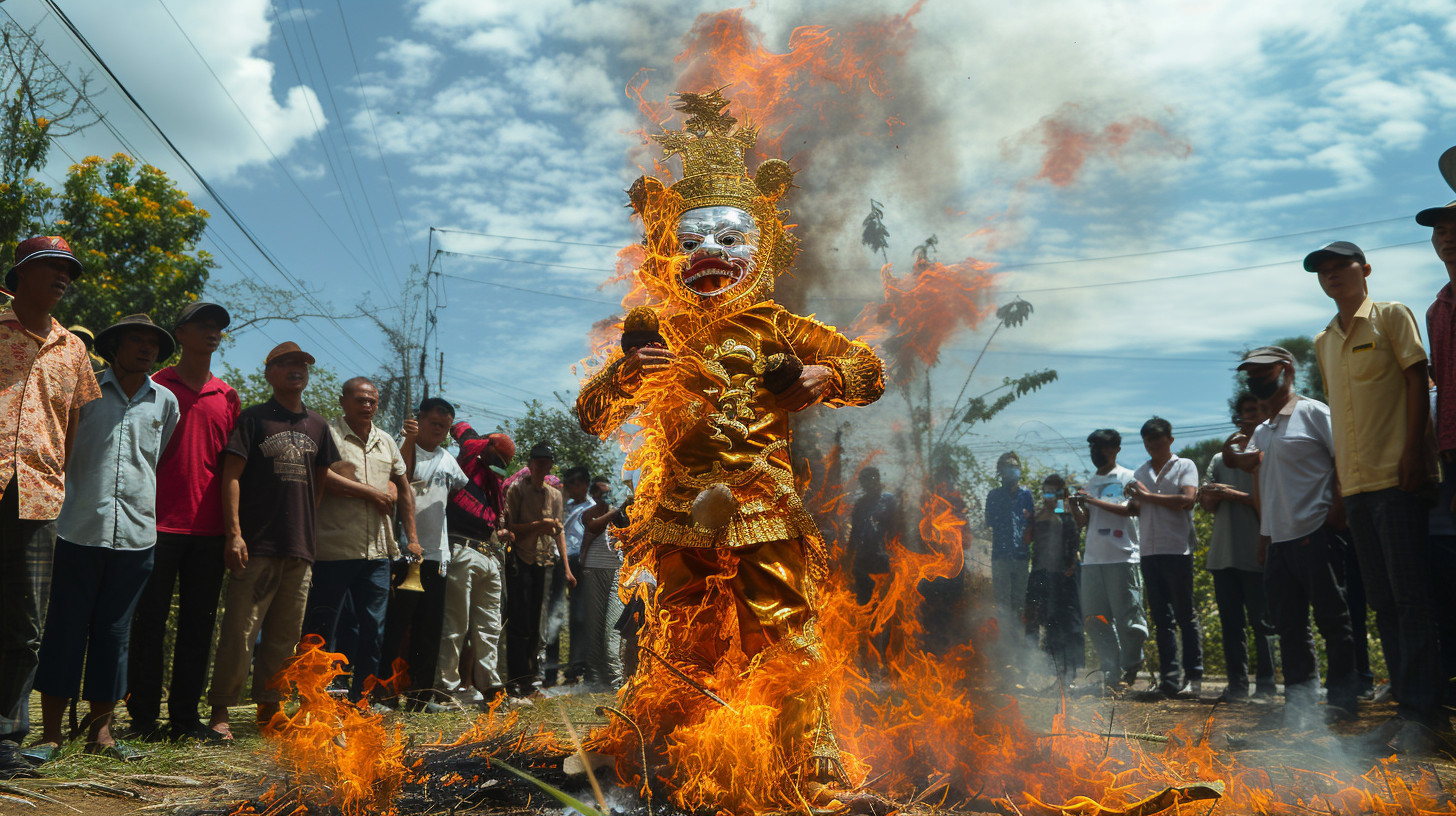Red Shirts Demand Kasit Piromya’s Resignation Amid Airport Seizure Allegations
In a display of political dissent, over 200 supporters of the Red Shirt movement congregated outside the Foreign Ministry in Bangkok, calling for the ouster of Foreign Minister Kasit Piromya. The protest, which took place yesterday, featured the symbolic burning of Kasit’s effigy, following his police questioning regarding the controversial closure of Bangkok’s airports last year.
Kasit, alongside 35 other individuals primarily from the People’s Alliance for Democracy (PAD), reported to the police on Monday to address inquiries about their participation in the occupation of Don Mueang and Suvarnabhumi airports. Despite facing terrorism charges, Kasit has rebuffed calls for his resignation, labeling the accusations as “unacceptable” and stating he would only step down if legal proceedings were initiated.
During the demonstration, Red Shirt leader Jaran Ditapichai presented an open letter to a senior ministry official. Another leader, Waranchai Chokchana, criticized Kasit for tarnishing Thailand’s reputation and warned of further protests if the government fails to dismiss him.
Meanwhile, Kasit was abroad in New Zealand for a bilateral relations committee meeting. Prime Minister Abhisit Vejjajiva avoided interaction with the Pheu Thai Party’s spokesperson, who sought to deliver a formal request for Kasit’s dismissal at the Government House. The document was instead handed to Sutham Limsuwankasem, a deputy prime minister’s secretary-general, with a similar request directed to Democrat Party’s chief adviser, Chuan Leekpai.
The refusal to engage with the opposition’s spokesperson prompted Prompong Nopparit to express disappointment and a sense of disrespect from Prime Minister Abhisit, who remained non-committal when questioned about Kasit’s tenure in light of a public-opinion poll favoring his resignation.
As the PAD prepares to meet with the police for further questioning next Thursday, the political tension surrounding the airport seizures continues to underscore deep divisions within Thailand’s political landscape.
Thoughts
Ah, the theater of Thai politics never disappoints, does it? Just when you think you’ve stumbled upon an article from Not the Nation, chock-full of satire and parody, you realize—no, it’s just another day in the land of smiles and protests. There we were, treated to the spectacle of Kasit Piromya’s effigy going up in flames, a scene so perfectly absurd you’d think it was ripped from the pages of a satirical rag. But no, this is real life, folks, where the Foreign Minister himself is a former airport siege enthusiast.
You’ve got to hand it to Thailand: appointing a man to oversee foreign relations who once took part in what can only be described as a lively round of “Let’s Blockade the Airport.” It’s the sort of resume highlight that, anywhere else, might disqualify you from public service, but here, it earns you a spot in the cabinet.
And then there’s good ol’ Prime Minister Abhisit, standing by his man with the sort of loyalty that would make even the most cynical among us blush. Kasit, after all, isn’t just any minister; he’s the embodiment of the double standards that the Red Shirts love to decry—a living, breathing symbol of the political divide tearing through Thailand.
Remember, this is the guy who reminisced about the airport protests as if they were a jaunty high school reunion, not a crippling blow to the nation’s international reputation and economy. The irony of his current position, tasked with smoothing over Thailand’s image abroad, is so rich, you could drizzle it over pancakes.
But as the effigy burns and the protests rumble on, one can’t help but wonder if the party’s over for Kasit. The political cauldron that once bubbled with PAD-induced excitement now seems to simmer with a less pleasant concoction, one that might just prove too bitter even for his tastes. Ah, the joys of Thai politics—where the line between satire and reality is as thin as the paper used to construct an effigy.



